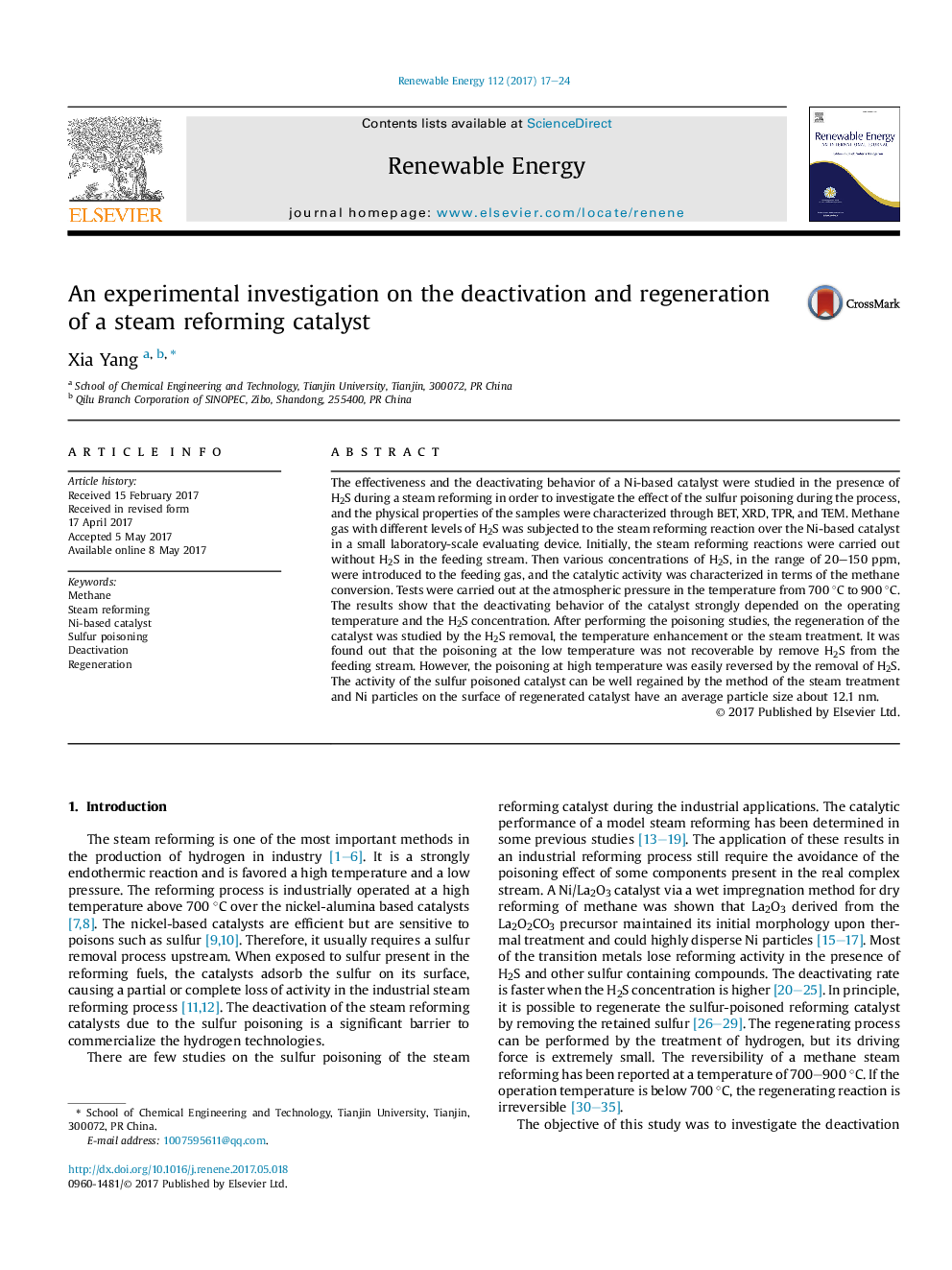| Article ID | Journal | Published Year | Pages | File Type |
|---|---|---|---|---|
| 4926108 | Renewable Energy | 2017 | 8 Pages |
Abstract
The effectiveness and the deactivating behavior of a Ni-based catalyst were studied in the presence of H2S during a steam reforming in order to investigate the effect of the sulfur poisoning during the process, and the physical properties of the samples were characterized through BET, XRD, TPR, and TEM. Methane gas with different levels of H2S was subjected to the steam reforming reaction over the Ni-based catalyst in a small laboratory-scale evaluating device. Initially, the steam reforming reactions were carried out without H2S in the feeding stream. Then various concentrations of H2S, in the range of 20-150 ppm, were introduced to the feeding gas, and the catalytic activity was characterized in terms of the methane conversion. Tests were carried out at the atmospheric pressure in the temperature from 700 °C to 900 °C. The results show that the deactivating behavior of the catalyst strongly depended on the operating temperature and the H2S concentration. After performing the poisoning studies, the regeneration of the catalyst was studied by the H2S removal, the temperature enhancement or the steam treatment. It was found out that the poisoning at the low temperature was not recoverable by remove H2S from the feeding stream. However, the poisoning at high temperature was easily reversed by the removal of H2S. The activity of the sulfur poisoned catalyst can be well regained by the method of the steam treatment and Ni particles on the surface of regenerated catalyst have an average particle size about 12.1 nm.
Related Topics
Physical Sciences and Engineering
Energy
Renewable Energy, Sustainability and the Environment
Authors
Xia Yang,
